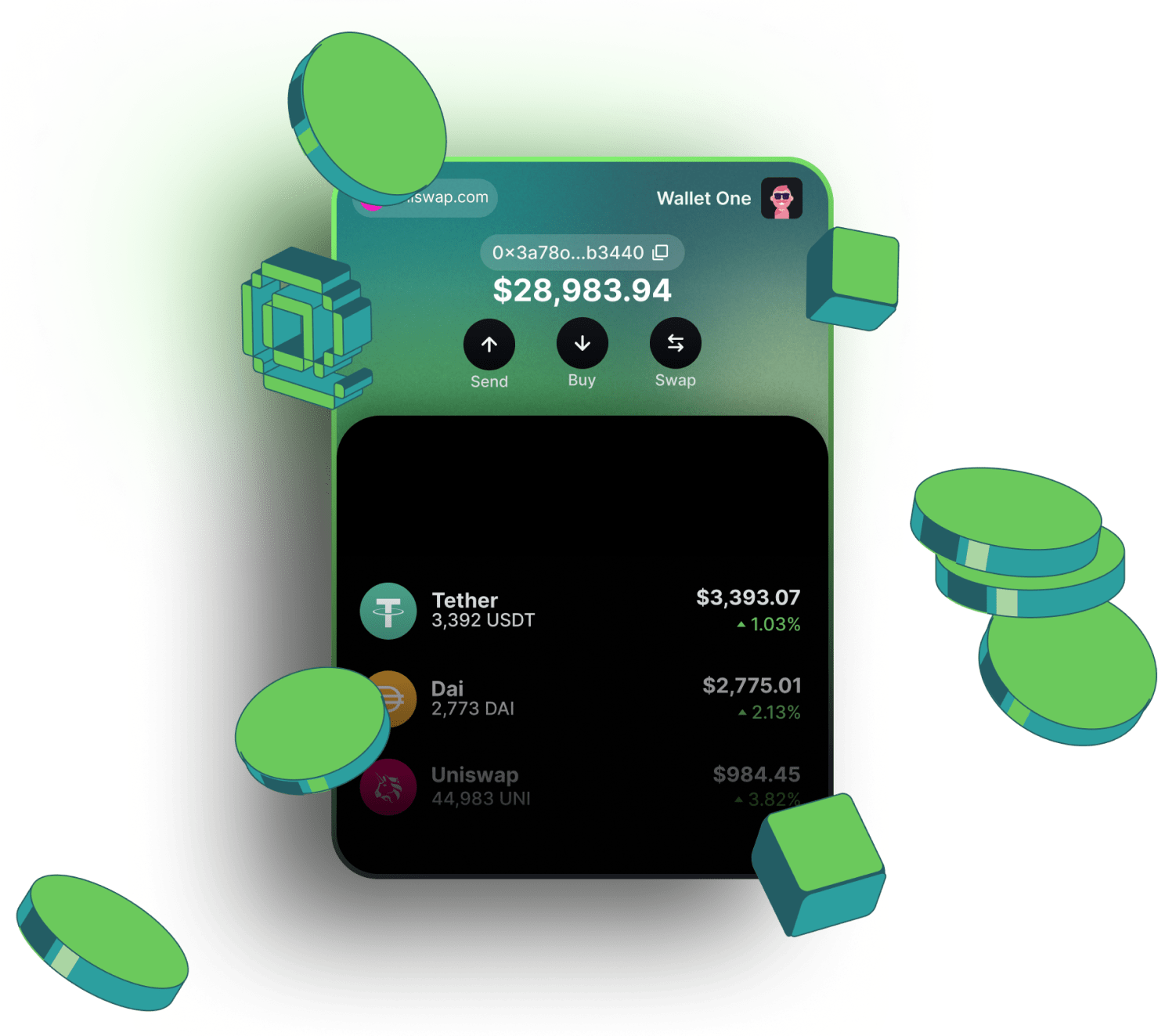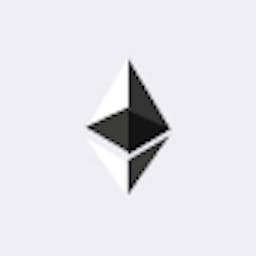Wigwam is the best  Morphl2.io blockchain crypto wallet
Morphl2.io blockchain crypto wallet

Why choose the Wigwam crypto app?
Work with Morphl2.io Testnets and Mainet
Buy Morphl2.io tokens, including native token, by using a credit card
Swap Morphl2.io-based tokens directly in the wallet
Possibility to connect the wallet to all Morphl2.io dAps: DeFi, DAO, Gamings, etc
How to get a Morphl2.io address in Wigwam web wallet
Create a wallet in Wigwam
Choose a Morphl2.io network from the dropdown menu
Copy you Morphl2.io address
Morphl2.io Blockchain Review
Morphl2.io is the blockchain that has been designed to enhance the experience for users in Ethereum Layer 2 while incorporating better scalability and user-friendly characteristics. It is recognized for its hybrid approach: Responsive Validity Proof, which merges Optimistic Rollups and Zero-Knowledge (ZK) proofs that make blockchain technology more practical for developers and users.
The architecture of the system includes decentralized consensus and the execution of transactions through the Sequencer Network, the Optimistic zkEVM for efficient and secure verification of the state, and Rollup to ensure data availability. These combine to create an environment that is scalable and accessible to end-users.
Origins & Vision
Morphl2.io was founded by Cecilia Hsueh and Azeem Khan. Currently, in its testnet phase, which began in January 2024, it has scheduled a launch date for its mainnet in the latter half of 2024, with a beta version expected in Q3.
Morph's vision focuses on bridging the gap between real-world applications and blockchain technology. The long-term goal in this respect is, therefore, to establish an ecosystem of blockchain, which at its core integrates into everyday life. Among the goals are mainstream adoption of blockchain, making it more consumer-friendly and efficient for consumers, and supporting developers in developing optimized DApps for end-users.
What Consensus Algorithm Does Morphl2.io Blockchain Use?
Morphl2.io uses a Byzantine Fault Tolerant consensus algorithm on the Decentralized Sequencer Network, meaning no one controls the sequencing of transactions - so this certainly improves security and reliability. Contrary to centralized models of sequencers, the decentralized sequencers taken by Morph, help in case of failure or malicious activity, the multiple sequencers can work together to produce blocks for Layer 2.
It maximizes scalability and reduces costs with fast transaction execution. BLS signatures, which are by Boneh-Lynn-Shacham, are used for batch transaction signing. The BLS signature ensures that the Layer 2 consensus verification is efficient against Layer 1. This robust consensus model supports and maintains a secure and decentralized environment when processing Ethereum layer 2 transactions.
How Morphl2.io Technically Solved Problems with Scalability, Decentralization, and Speed?
Morphl2.io solves the problem of scalability, decentralization, and speed by taking an innovative architecture coupled with a hybrid approach.
Scalability: Morphl2.io uses a system of Responsive Validity Proof (RVP) that combines Optimistic Rollups and Zero-Knowledge Rollups, which means speeding up transactions while saving fees through optimistic processing. ZK proof is returned if challenged, cutting the average 7-day challenge period down to 1-3 days. Its modular architecture, including the Sequencer Network, Rollup, and Optimistic zk-EVM, allows smooth upgrades and better scalability without interfering with other activities.
Decentralization: It utilizes a Decentralized Sequencer Network, fully eliminating single points of failure or monopolization in the platform, meaning that there are always transactions being processed even if one sequencer fails or acts maliciously. It also incorporates Byzantine Fault Tolerant (BFT) consensus in reaching collective decision-making even with some nodes failing. BLS signatures add to the decentralization and security of transaction batches.
Speed: Morphl2.io brings the efficiency of Optimistic Rollups with speedy ZK proof generation into the transaction confirmation process, fastening confirmations for the efficiency of transactions. Its batch processing, where its sequencers sign a number of L2 blocks with BLS signatures before submitting them to L1, hence, now all the Layer 1 interactions are reduced, speeding up processes throughout and also transactions throughput.
Who are the Main Players in the Morphl2.io Blockchain?
The infrastructure of morphl2.io entirely depends on a decentralized network of sequencers, validators, provers, nodes, and batch submitters. They all try to do their respective roles to achieve complete security, efficiency, and scalability in the setting of this ecosystem.
- Sequencers: Sequencers carry out Layer 2 transactions, form blocks, and submit them to Layer 1 (Ethereum) for finalization. They also look after the network speed and efficiency since they can process batched operations and create validity proofs when needed
- Validators: Validators monitor transactions and state changes and verify the validity of states reported by sequencers to Layer 1. They deny incorrect states, thereby enhancing security to prevent fraud.
- Provers: Provers create zero-knowledge zk proofs that verify a challenged transaction so that only a valid transaction is accepted.
- Nodes: Nodes enable Layer 2 data access. Decentralization is not affected since access is given to users, but the nodes are not involved in the transaction process.
- Batch Submitters: In this sequencer role, Layer 2 block submitters package batches, and submit them to Layer 1, maximizing efficient transaction processing while minimizing costs for it.
DeFi Ecosystem on Morphl2.io blockchain
The DeFi ecosystem on Morphl2.io facilitates access to lending, borrowing, and trading globally, not depending on conventional banking. Hybrid roll-up technology ensures Morphl2.io does operate at very low fees with fast transactions. The decentralized sequencer network adds extra security.
The modular design of Morphl2.io fosters innovative ability in DeFi applications; it encompasses capabilities in tokenization and collateralized lending. With efficient validation processes that cut costs, financial inclusion and the efficiency of Morphl2.io in decentralized finance stand as signatures of its foundational role.
Currently, Morphl2.io has its native DeFi project, Morph Finance, with several DeFi projects expected to come soon.
NFTs Marketplaces on Morphl2.io Blockchain
Morphl2.io's NFT marketplaces will completely revolutionize the digital asset economy, with global accessibility, low transaction fees, and faster processing times through its Layer 2 technology. These marketplaces will host a wide range of NFT categories, art, and gaming assets, which are expected to launch on Morphl2.io soon.
Creators can enjoy continued royalties from the resale of their NFT, fueling new innovations and sources of revenue. The focus of Morphl2.io is on reducing costs and community engagement, making it one of the main players in the ever-changing landscape of NFT.
Tokenomics and Gas Usage on Morphl2.io
The gas usage and Morphl2.io tokenomics are aligned for its decentralized sequencer network and hybrid rollup solution. The governance token is Morph, while the gas token is ETH. Morph's hybrid roll-up technology cuts gas usage because it deploys optimistic and zero-knowledge proofs, and it optimizes the need to obtain BLS signatures in batches of blocks, therefore making the overall transaction cost minimum.
Conclusion
Morphl2.io is the cutting-edge Ethereum Layer 2 solution, aggregating decentralized sequencer networking along with optimistic zkEVM. The hybrid system synthesizes the advantages of optimistic rollups with the advantage of zero-knowledge proof to assure extremely efficient, safe, and cheap transactions.
Responsive Validity Proof makes the confirmations accelerate and lessens the gas fees, making Morphl2.io an attractive platform for decentralized applications and financial services.
FAQ
Morphl2.io utilizes ETH as its gas fee.
Enter your public wallet address in the search bar of the Morph Holesky Blockchain Explorer to gain access to all your account history and transaction specifics.
To choose the best crypto wallets for the Morphl2.io blockchain, prioritize those that support Ethereum and its Layer 2 solutions. Top options for interacting with Morphl2.io include Wigwam wallet, MetaMask, Trust Wallet, Coinbase Wallet, Exodus, and Ledger (hardware wallet).
To add Morphl2.io to your MetaMask wallet, follow these steps:
1. Install MetaMask: Download and install the MetaMask extension from the official website.
2. Open MetaMask: Click the MetaMask icon in your browser.
3. Add the Morph Holesky Testnet:
- Automatic Setup:
- Visit the Morph Holesky block explorer.
- Click "Add to Wallet" to automatically import the chain ID and RPC URLs.
- Manual Configuration:
- Open MetaMask and select the network dropdown.
- Click "Add Network" and fill in the following details.
- Network Name: Morphl2.io
- RPC URL: https://rpc-quicknode-holesky.morphl2.io
- Chain ID: 2810
- Currency Symbol: ETH
- Block Explorer URL: Morph Holesky Blockchain Explorer
4. Save and Switch Networks: Click “Save”. Select "Morph Holesky Testnet" from your network list to interact with dApps.





